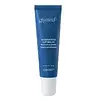What's inside
What's inside
 Key Ingredients
Key Ingredients

 Benefits
Benefits

 Concerns
Concerns

 Ingredients Side-by-side
Ingredients Side-by-side

Petrolatum
EmollientHydrogenated Polyisobutene
EmollientJojoba Esters
EmollientBeeswax
Emulsion StabilisingHelianthus Annuus Seed Oil
EmollientButyrospermum Parkii Butter
Skin ConditioningOlea Europaea Fruit Oil
MaskingVitis Vinifera Seed Oil
EmollientPersea Gratissima Oil
Skin ConditioningTocopheryl Acetate
AntioxidantEthylene/Propylene/Styrene Copolymer
Butylene/Ethylene/Styrene Copolymer
Mentha Piperita Oil
MaskingMentha Viridis Leaf Oil
AstringentPetrolatum, Hydrogenated Polyisobutene, Jojoba Esters, Beeswax, Helianthus Annuus Seed Oil, Butyrospermum Parkii Butter, Olea Europaea Fruit Oil, Vitis Vinifera Seed Oil, Persea Gratissima Oil, Tocopheryl Acetate, Ethylene/Propylene/Styrene Copolymer, Butylene/Ethylene/Styrene Copolymer, Mentha Piperita Oil, Mentha Viridis Leaf Oil
Hydrogenated Polyisobutene
EmollientPetrolatum
EmollientEthylene/Propylene/Styrene Copolymer
Butylene/Ethylene/Styrene Copolymer
Beeswax
Emulsion StabilisingBrassica Campestris/Aleurites Fordi Oil Copolymer
Skin ConditioningTocopheryl Acetate
AntioxidantOlea Europaea Fruit Oil
MaskingGlycine Soja Oil
EmollientPrunus Amygdalus Dulcis Oil
Skin ConditioningEthylhexyl Palmitate
EmollientCeramide NP
Skin ConditioningTribehenin
EmollientPropylparaben
PreservativeSorbitan Isostearate
EmulsifyingPalmitoyl Oligopeptide
CleansingParfum
MaskingMica
Cosmetic ColorantTitanium Dioxide
Cosmetic ColorantIron Oxides
Hydrogenated Polyisobutene, Petrolatum, Ethylene/Propylene/Styrene Copolymer, Butylene/Ethylene/Styrene Copolymer, Beeswax, Brassica Campestris/Aleurites Fordi Oil Copolymer, Tocopheryl Acetate, Olea Europaea Fruit Oil, Glycine Soja Oil, Prunus Amygdalus Dulcis Oil, Ethylhexyl Palmitate, Ceramide NP, Tribehenin, Propylparaben, Sorbitan Isostearate, Palmitoyl Oligopeptide, Parfum, Mica, Titanium Dioxide, Iron Oxides
Ingredients Explained
These ingredients are found in both products.
Ingredients higher up in an ingredient list are typically present in a larger amount.
Beeswax is natural wax produced by honey bees and can be synthetically created. It consists mainly of fatty acid esters and long-chain alcohols.
In cosmetics, beeswax is a emollient. Due to its waxy structure, it creates a protective barrier. This barrier prevents water from evaporating off the skin.
This may not be a good ingredient for oily skin. We recommend speaking with a professional if you have concerns.
Beeswax cannot be removed with water, but can be taken off with an oil cleanser.
Beeswax is also antiseptic and contains vitamin A.
Learn more about BeeswaxWe don't have a description for Butylene/Ethylene/Styrene Copolymer yet.
We don't have a description for Ethylene/Propylene/Styrene Copolymer yet.
Hydrogenated Polyisobutene is a synthetic polymer. Polymers are compounds with high molecular weight. Hydrogenated Polyisobutene is an emollient and texture enhancer.
In one study, Hydrogenated Polyisobutene showed better skin hydration levels than Caprylic/Capric Triglyceride. As an emollient, it helps keep your skin soft and hydrated by trapping moisture in.
Hydrogenated Polyisobutene is often used as a mineral oil replacement.
Learn more about Hydrogenated PolyisobuteneOlea Europaea Fruit Oil is the fixed oil obtained from the ripe fruit of the Olive. In other words - olive oil.
The primary contents of olive oil are glycerides of the fatty acids linoleic, oleic and palmitic.
Olive oil also contains antioxidants such as Vitamin E. Antioxidants may help reduce signs of aging by fighting unstable free-radical molecules. It also contains Vitamins A (retinol), D, and K.
The squalene in olive oil makes it a great emollient. Emollients help soothe and soften your skin by trapping moisture in. This makes olive oil a great skin moisturizer.
Studies show olive oil to have antibacterial and antifungal properties in low concentrations. Another study found olive oil irritated sensitive oily skin. We always recommend speaking with a professional about using this ingredient in your routine.
Due to the fatty acid content, this ingredient may not be fungal-acne safe.
Learn more about Olea Europaea Fruit OilPetrolatum is more commonly known as petroleum jelly. It is created by mixing waxes and mineral oils.
This ingredient is effective at reducing water loss by 99%. This is because it is an occlusive. Occlusives create a hydrophobic barrier on the skin to prevent evaporation. This property makes it great for hydrating dry skin.
Pro tip: Use occlusives, such as this ingredient, on damp skin for the best results.
The quality or origin of petrolatum is only known when disclosed by the brand. Most cosmetic petrolatum has gone through several purification stages.
Another benefit of occlusives is it protects your skin against infection or allergies.
Petrolatum may not be safe for fungal-acne. Studies show mineral oil / petroleum leads to the growth of M. Furfur, a type of yeast.
Learn more about PetrolatumTocopheryl Acetate is AKA Vitamin E. It is an antioxidant and protects your skin from free radicals. Free radicals damage the skin by breaking down collagen.
One study found using Tocopheryl Acetate with Vitamin C decreased the number of sunburned cells.
Tocopheryl Acetate is commonly found in both skincare and dietary supplements.
Learn more about Tocopheryl Acetate